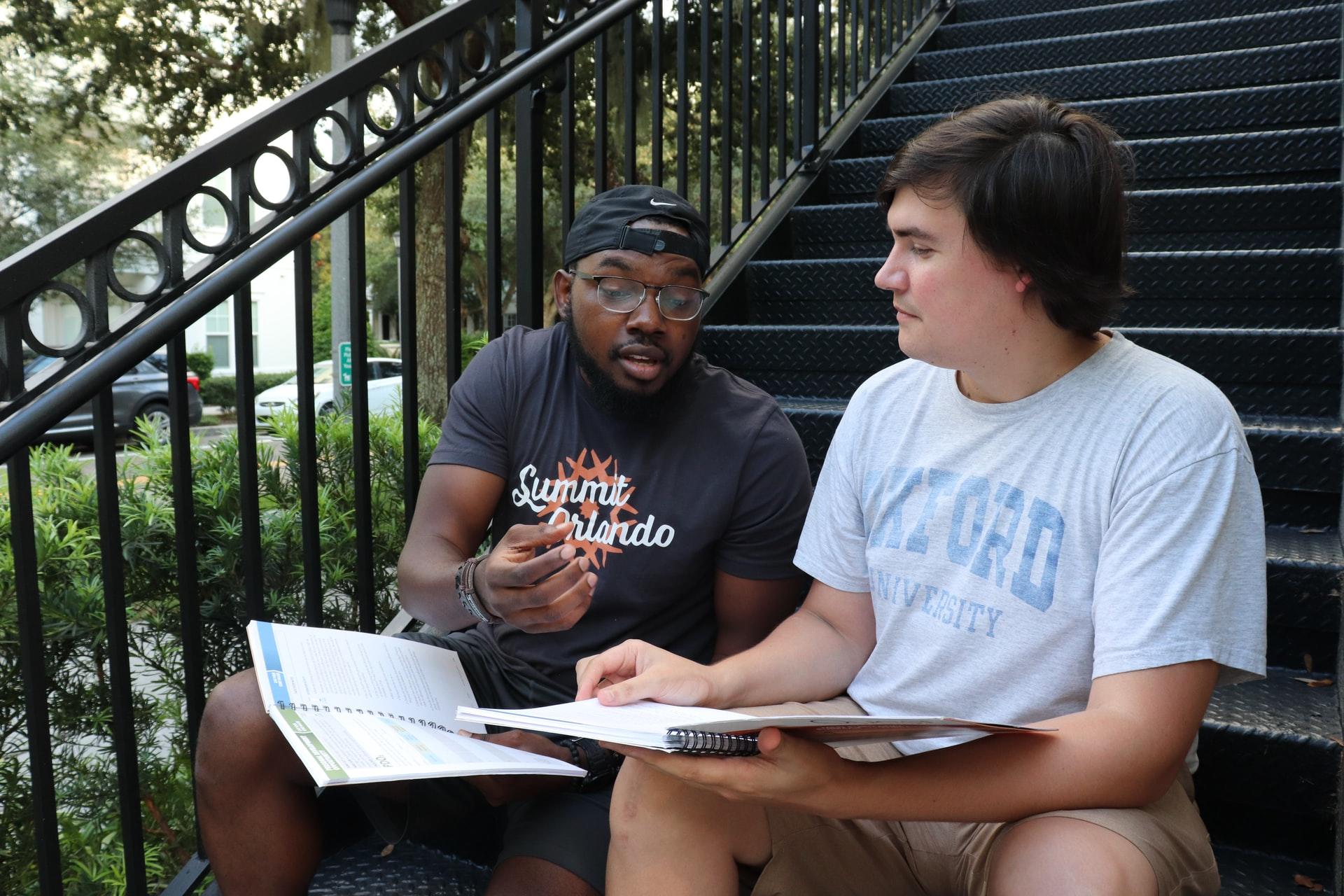Chapters
Tutoring is an essential tool in providing students with additional academic support, particularly in subjects that they may struggle with. In the UK, tutoring has become a central focus in the education sector, with the government launching several initiatives aimed at improving academic outcomes for students.
In-class support is an essential tool for teachers to provide students with special needs additional support while participating in the general classroom environment. It allows students to receive the necessary assistance to be successful academically and socially. In this article, we will discuss what in-class support is, strategies for implementing it, and the benefits it provides to students and teachers.
Want to give private lessons?
Join the Superprof community and share your knowledge with interested and motivated students.
What is In-Class Support
In-class support is a method of supporting students with special needs in the general classroom environment. This support is provided by a team of educators, including general education teachers, special education teachers, and other support staff. The goal of in-class support is to help students with special needs participate in the general curriculum and learn alongside their peers.
In-class support can take many forms, including co-teaching, push-in support, and pull-out support. Co-teaching is a teaching model where two teachers work together in the classroom. One teacher is usually the general education teacher, while the other is the special education teacher. The teachers collaborate to plan lessons, differentiate instruction, and provide additional support to students with special needs.
Push-in support involves a special education teacher or a support staff member working with a student or a small group of students in the general education classroom. The teacher or support staff member provides assistance with assignments, materials, or behaviour management.
Pull-out support involves a student receiving additional support outside of the general classroom environment. This can include speech therapy, occupational therapy, or one-on-one instruction.
Government-led Schemes
The National Tutoring Programme (NTP) is a government-led scheme aimed at providing additional academic support to students who have been adversely affected by the COVID-19 pandemic. The NTP provides schools with funding to hire external tutors to work with students in both primary and secondary schools. The programme is designed to provide one-to-one and small-group tuition in subjects such as English, maths, and science.
The NTP is also designed to support students from disadvantaged backgrounds, with additional funding allocated to schools with a higher proportion of disadvantaged students. This ensures that all students, regardless of their background, have access to the academic support they need.
Want to give private lessons?
Join the Superprof community and share your knowledge with interested and motivated students.
School-led Training
School-led training is another approach to tutoring that has gained traction in recent years. Rather than relying on external tutors, schools train their own teachers to provide additional academic support to students. This approach is particularly effective as teachers already have a deep understanding of their students and can tailor their teaching to meet their individual needs.
School-led training can take many forms, including after-school clubs, small-group tuition, and one-to-one support. By providing training for teachers, schools can ensure that students receive high-quality academic support without incurring additional costs.
One of the key benefits of school-led training is that it allows teachers to tailor their teaching to meet the specific needs of their students. As teachers already have a deep understanding of their students, they can identify areas where students may be struggling and provide targeted support.
Implementing School-led Training Effectively
To implement school-led training effectively, schools need to have a clear strategy in place. This strategy should outline the specific goals of the training, the resources that will be required, and the roles and responsibilities of the teachers involved.
Schools should also ensure that they provide adequate training and support to their teachers. This may include providing professional development opportunities, access to resources and materials, and regular feedback and support.
Finally, schools should evaluate the effectiveness of their school-led training programmes on an ongoing basis. This may involve collecting data on student outcomes, conducting surveys with students and teachers, and seeking feedback from parents and other stakeholders.
Talking to the teacher
The sooner you can start helping your students achieve their goals in the classroom, the better.
When it comes to providing effective support for the students in your class you will need to learn about them all as individuals. Adopting a more personal approach and understanding how each student learns is far more effective than treating them as a group.
The best way to familiarise yourself with the dynamics of the classroom that you will be assisting in is to speak with the teacher. Instead of having to spend months if not years figuring out what the teacher already knows all by yourself, you could find this out over a few conversations.
Setting up a good line of communication with the teacher will help you master in-class support the quickest. Tutors may be excused for just "getting on with it" and using their instincts to decide where to be, what to do, and who to assist in an effort to make as little noise as possible.
Teachers typically provide you with some guidance regarding which students are most likely to need your support in the class. This is important as it will help you to gauge who you should be spending your time with. They'll probably let you know whether they'd like you to sit with a certain student or group.
Nothing, however, is more beneficial than posing these issues to the instructor and gaining their guidance on what to concentrate on. As the academic calendar unfolds, you will likely have a better sense of all this by yourself.
During the immediate stages, however, it is important that you use the resources available to you and start supporting the students as soon as possible.
Whether you are in the classroom to assist the students that are having the greatest difficulty, or you spend time assisting everyone else so the teacher can concentrate more of their attention on them is something that you will need to assess between yourselves too.

Taking time to work ahead
Tutors working in a classroom for the first time will usually jump right into helping students – assuming their subject knowledge is sufficient to help students whenever they get stuck. In fact, one of the most productive things tutors can do is take 5 minutes to work through the lesson’s resources ahead of time – identifying likely sticking points or common incorrect answers.
If you’ve worked through the questions yourself, you’ll get an immediate sense of why students are getting stuck on which questions and be prepared with a helpful way to unlock the key concept. If you’ve not checked ahead you might not spot a small error in students’ work or might get caught on the hop with a tricky question and give someone a hint in the wrong direction!
Engaging students that don't ask for help
There are many reasons why a student might not ask for help. This makes it difficult as an educator to arrive at an understanding for where each of their students are at with their learning. It also makes it difficult for the teacher and support staff to know where they need to subsequently allocate their time and what material they might need to go over.
Some Students are quite good at asking for assistance when it is needed. You'll immediately recognize them. When they are stuck on a question, they will raise their hand in the air.
If you'll let them, they'd be happy to have you answer any questions they have. However, part of your job in the classroom is to look past these pupils and identify the ones who are toiling away in quiet.
If you don’t make sure to do this, the entire class will end up following the needs of a select group of subjects rather than the class in its entirety.
If you have students that don't know how to ask for help or who don't feel comfortable raising their hand in the air then be sure to check on them as they go about their work.
Remember, a young student has a tremendous amount of weight to bear when they lack confidence in the classroom. Many pupils will try their hardest to avoid you paying them any attention and finish each lesson without bothering anybody else.
They will often consult their peers before they ask for assistance, and ask other pupils about their assignments.
You can always ask engaging questions that aren’t too intimidating for the student to answer. Get the students involved in your class by asking ‘What did you come up with for this? Please elaborate on that for me’.
You'll quickly realize that students genuinely need your help, and the teaching staff will be more than grateful for your initiative!
Put all your effort into your classes
It is beneficial to add a demonstration when introducing a new topic to your students. Others, especially visual learners, will need to see the material in order to fully understand it. Some kids can acquire a new concept just by hearing it.
This can go a long way when it comes to influencing the students' attitude towards the subject that you teach and, perhaps more importantly, how they reflect on you as an educator.
when your students are in your classroom and you are going through a new topic you might try and make an effort to engage your students in their learning and excite them about the material.
Instead of sitting in your chair and running through an endless stream of slides on a topic and having your students take notes for the entirety of your classes. It would help if you made an effort to show your work on the board when instructing a class because otherwise, your students won't understand a thing.
This allows for better comprehension and class participation. Make sure that your lessons stand out and get your students engaged in the topics that you teach.
In order for your students to fully grasp a concept, some may require more than one illustration. Bear in mind that your class will likely be comprised of a number of different kinds of learners. It is important that you conduct your classes to cater for all the styles of learning if you want all of your students to progress.
For each new lesson, be sure to include a variety of demonstrations, as repetition is essential for helping learners retain new information. When you use this strategy, you'll notice a significant improvement in test scores for all learners.
If you want to become a top tutor you should listen to the advice of professionals.
Rewarding the right behaviour
Tutors can get into a pattern of rewarding the wrong behaviours; giving all of their attention to the students who demand it by not properly engaging with the lesson.
If students know that not doing the work is the one way they’re guaranteed to get your undivided attention, they’ll keep not doing it. If your focus is elsewhere, they’ll make themselves impossible to ignore.
If your attention is on them, they’ll make it very hard for you to go elsewhere. Whether or not they need your help quickly becomes impossible to tell and you’ve entered into a pattern of behaviour that always ends in disruption – not just for that student but for the whole class.
Be mindful of this and always be prepared to walk away from students that are getting your attention for all of the wrong reasons.
Small group sessions are also another effective medium for students to learn through.

Expand your earnings as an educator with Superprof
More and more educators are moving over to tutoring websites like Superprof, which allows students to browse and connect with the qualified tutors that occupy the space.
These online tutor platforms offer both greater flexibility and more competitive pricing for both students and teachers.
If you haven’t already, you should check out Superprof! Just a short browse of the platform for the subjects or skill that you intend on teaching and you’ll get a sense of what students in your area are paid per hour.
If you are looking to give private tutorials to your students you could opt for online or in-person lessons on the platform. This will broaden your reach and might just help you find more students!
While the hourly rate for your sessions is likely to fluctuate depending on your r experience as a tutor, it will provide you with a great benchmark and ultimately help you in making an informed decision on what hourly rate you should be charging.
Your rate will also vary according to supply and demand with supply is the number of tutors offering a given class and the demand being the number of students who want classes.
This avenue will provide you with the opportunity to try out any of the techniques mentioned in this article while providing you with a lucrative stream of income outside of the classroom.
Try enrolling as a Superporf tutor today and improve as an educator!
Want to give private lessons?
Join the Superprof community and share your knowledge with interested and motivated students.















